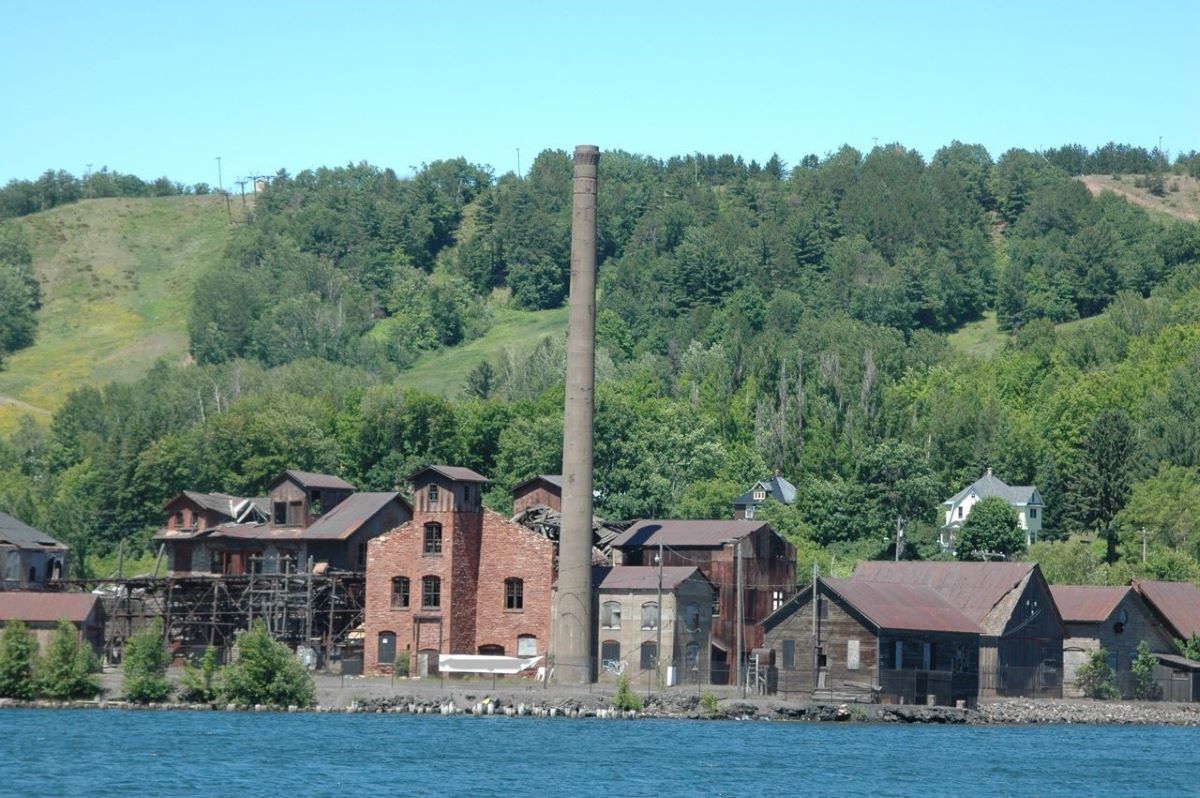Lost Copper Smelters Of Michigan

Have you ever heard of the lost copper smelters of Michigan? These mysterious sites have puzzled historians and adventurers for years. Hidden deep within Michigan's forests, these ancient smelters tell a story of early industry and forgotten technology. Some believe they date back to Native American tribes, while others think early European settlers built them. Theories abound, but concrete evidence remains elusive. Exploring these sites offers a glimpse into a past where copper was king. Whether you're a history buff or just love a good mystery, the lost copper smelters of Michigan are sure to intrigue you. Ready to learn more?
The Mystery of Michigan's Lost Copper Smelters
Michigan's Upper Peninsula holds secrets from the past. Among these are the lost copper smelters, remnants of a once-thriving industry. These sites offer a glimpse into the region's rich history and the lives of those who worked there. Let's explore some of these fascinating locations.
1. Quincy Smelter
Located in Hancock, the Quincy Smelter is one of the best-preserved smelting sites in the region. This site operated from the late 1800s until the mid-1900s, processing copper from the nearby Quincy Mine.
- Historical Significance: It played a crucial role in the local economy.
- Current State: Partially restored, open for guided tours.
- Unique Feature: Original machinery still in place.
2. Calumet and Hecla Smelter
The Calumet and Hecla Smelter, situated in Hubbell, was a powerhouse in the copper industry. This smelter processed vast amounts of copper ore, contributing significantly to the area's prosperity.
- Historical Significance: One of the largest smelters in the region.
- Current State: Mostly ruins, but some structures remain.
- Unique Feature: Large slag piles, remnants of the smelting process.
3. Copper Range Smelter
Located in Freda, the Copper Range Smelter was another key player in Michigan's copper industry. This site processed ore from the Copper Range Mining Company, which operated several mines in the area.
- Historical Significance: Vital for the Copper Range Mining Company's operations.
- Current State: Abandoned, with some structures still standing.
- Unique Feature: Scenic location along Lake Superior's shore.
4. Tamarack City Smelter
The Tamarack City Smelter, near Lake Linden, processed copper from the Tamarack Mine. This smelter was essential for the mine's success and the local community's growth.
- Historical Significance: Supported the Tamarack Mine's operations.
- Current State: Mostly ruins, with some foundations visible.
- Unique Feature: Proximity to the historic Tamarack Mine.
5. Atlantic Mine Smelter
The Atlantic Mine Smelter, located near the town of Atlantic Mine, processed copper from the Atlantic Mine. This site played a significant role in the area's mining history.
- Historical Significance: Key to the Atlantic Mine's success.
- Current State: Ruins, with some remnants of the smelting process.
- Unique Feature: Close to the historic Atlantic Mine site.
6. Ahmeek Smelter
Situated in the town of Ahmeek, this smelter processed copper from the Ahmeek Mine. It contributed to the local economy and the region's copper production.
- Historical Significance: Supported the Ahmeek Mine's operations.
- Current State: Mostly ruins, with some structures still standing.
- Unique Feature: Located near the historic Ahmeek Mine.
7. Winona Smelter
The Winona Smelter, located near the town of Winona, processed copper from the Winona Mine. This site was crucial for the mine's success and the local community's growth.
- Historical Significance: Essential for the Winona Mine's operations.
- Current State: Ruins, with some remnants of the smelting process.
- Unique Feature: Proximity to the historic Winona Mine.
8. Champion Smelter
Located near the town of Champion, this smelter processed copper from the Champion Mine. It played a significant role in the area's mining history.
- Historical Significance: Key to the Champion Mine's success.
- Current State: Ruins, with some remnants of the smelting process.
- Unique Feature: Close to the historic Champion Mine site.
9. Mohawk Smelter
The Mohawk Smelter, situated near the town of Mohawk, processed copper from the Mohawk Mine. This site contributed to the local economy and the region's copper production.
- Historical Significance: Supported the Mohawk Mine's operations.
- Current State: Mostly ruins, with some structures still standing.
- Unique Feature: Located near the historic Mohawk Mine.
10. Centennial Smelter
Located near the town of Centennial, this smelter processed copper from the Centennial Mine. It played a significant role in the area's mining history.
- Historical Significance: Key to the Centennial Mine's success.
- Current State: Ruins, with some remnants of the smelting process.
- Unique Feature: Close to the historic Centennial Mine site.
The Legacy of Michigan's Copper Smelters
Michigan's copper smelters played a crucial role in the state's history. These industrial giants transformed raw copper into usable materials, fueling economic growth and technological advancements. Today, the remnants of these smelters stand as silent witnesses to a bygone era. They remind us of the hard work and innovation that once thrived in the region.
Exploring these sites offers a unique glimpse into the past. It's a chance to appreciate the craftsmanship and dedication that went into every piece of copper produced. Whether you're a history buff or just curious, visiting these locations can be a rewarding experience.
So next time you're in Michigan, take a moment to visit these historic sites. You'll gain a deeper understanding of the state's rich industrial heritage and the people who made it all possible.

